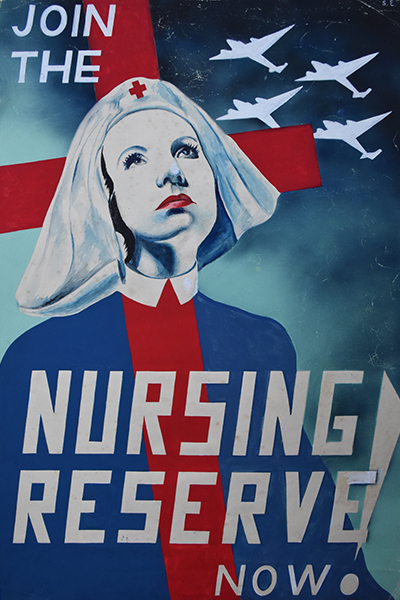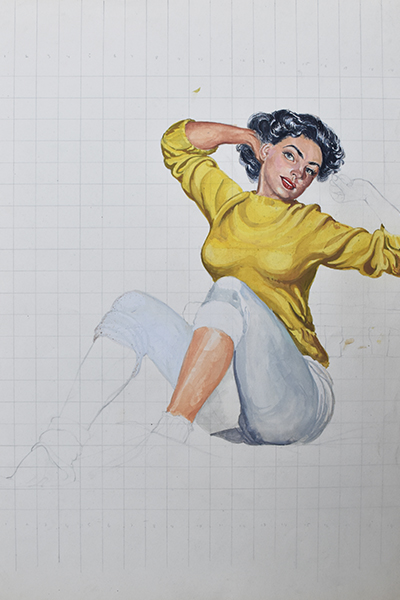‘I believe the College must have been a great stabilising influence on Sam’s life. He would often mention the College and point it out when we visited the assembly hall next door. I think it had a big impact. His friend studied at the College and managed to enrol by paying weekly instalments, he took Sam to the principal to negotiate the same settlement.’
- Pam Everton, 2023.
In 1938 Germany annexed the Sudetenland cutting Czechoslovakia off from its most well defended border and vital industries. During this time Sam Eichner (later Sam Everton) was living with his family in Moro-Ostravice, Czechoslovakia. Sam had a passion for art and would often combine paint remnants his father brought home from work with oil to paint scenes and portraits onto cardboard boxes.
It wasn’t long after Germany had annexed the Sudetenland that Hitler, in breach of the agreements reached at Munich, marched his forces deeper into Czechoslovakia. There was a lot of fear, and questions as to what would happen next were on everyone’s mind. Many people decided to flee the country before Germany took full control - Sam was one of those people. One night in 1939 he sneaked out of the family home to meet his friends by the local river; it would be the last time for several years that Sam would see any of his family. In the 1950s contact was reestablished with his brother after the Red Cross in Italy wrote to him. His brother moved to Israel and Sam would often travel there to see his brother’s family. It was through his brother that Sam learned of the rest of his family’s fate in the Nazi concentration camps.
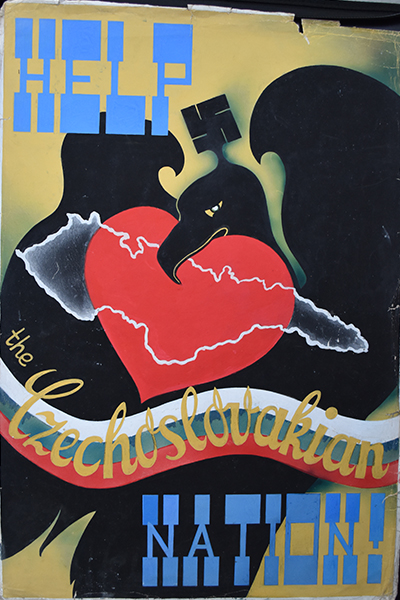
Sam and his friends were to make their way through a border town, cross a partially cleared area of forest and finally cross one of the two bridges that joined the Czechoslovakian and Polish borders. It would not be easy since Poland had increased the number of troops along the Czechoslovakian border. Prisoners and refugees were not being taken; people fleeing were either told to turn back or were shot. Out of his group Sam was the only person to make it across the border, dodging the Alsatians and Polish military. Now he could set his sights towards Krakow.
Krakow was filled with people like Sam who were trying to flee. His goal was to make it to England. Luckily, he was able to find a place on a freighter destined for London. On 9th May 1939, Sam arrived in London with no money and very little English. He found himself in a foreign country, safe but alone, and was moved between several different camps and hostels before eventually settling in Highams Park. It was here in September 1939 that Sam enrolled onto an art course at the South-West Essex Technical College and School of Art to continue the passion he had left behind.
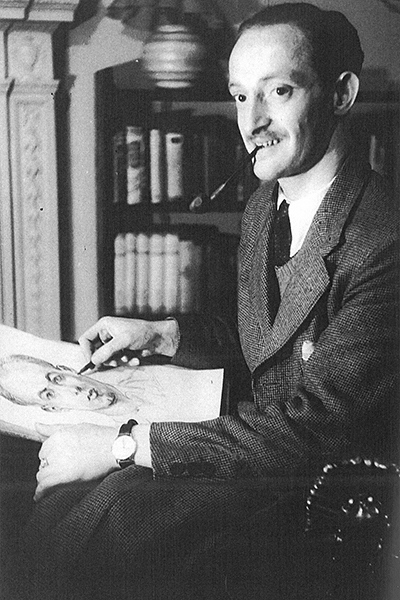
It is likely he stayed at the College from 1939-1941. During this time his technique and ability in both art and spoken English greatly improved. Sam would study art at the College during weekdays and also on Sundays. Sam’s wife Pam said:
‘I believe the College must have been a great stabilising influence on Sam’s life. He would often mention the College and point it out when we visited the assembly hall next door. I think it had a big impact. His friend studied at the College and managed to enrol by paying weekly instalments, he took Sam to the principal to negotiate the same settlement.’[1]
After studying at the College Sam joined the Royal Air Force (RAF) where he was employed as a Safety Equipment Officer, making and mending parachutes and harnesses. Towards the end of the war he became an interpreter for an RAF squadron that was tasked with investigating concentration and prisoner of war camps. At this time he didn’t know the fate of his family in one such camp.
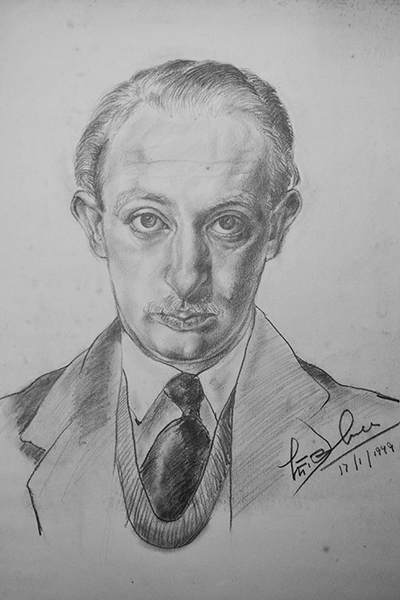
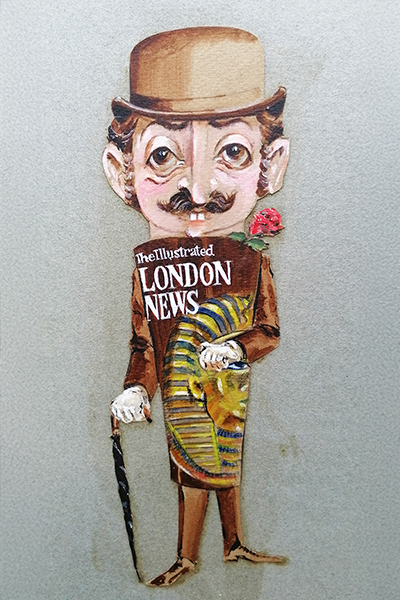
It seems that after a few attempts to make money from his artistic talents, Sam stopped drawing and painting around 1949. He would continue to be artistic, meeting future wife Pam while singing in local operatic productions with the Grosvenor Light Opera Company. They would remain married for 49 years. Pam’s tribute to her husband sums up the man he was:
‘Sam was wise and tolerant. We were equal partners and he encouraged me to develop interests with him….He brought elegance and charm to everything he did…. He was a passionate gardener…and would spend many hours in the greenhouse growing flowers and vegetables from seed. Sam has enriched my life in every way and every year spent with him has been a privilege.’
His career after the RAF took him into advertising where he worked at a few smaller firms before joining The Illustrated London News. Terry Bygraves, a colleague of Sam’s, remembered he would ‘wear a pin-striped suit with a carnation in the buttonhole, carrying a bowler hat and a rolled umbrella’. Sam’s career at the Illustrated London News would see him promoted to Advertisement Manager. During this time he was photographed on several occasions, including for a magazine article describing him as an ‘English City Gent’ and once, unknowingly, by Antony Armstrong-Jones.
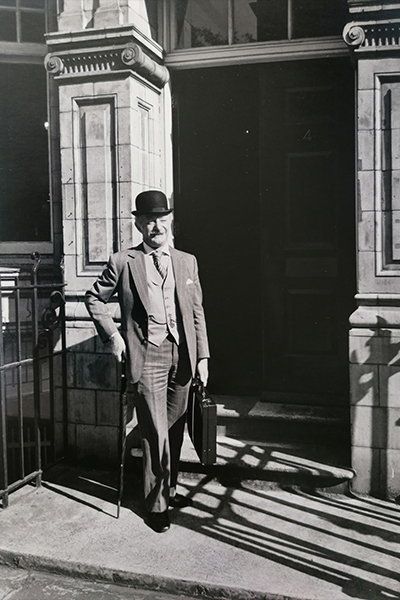
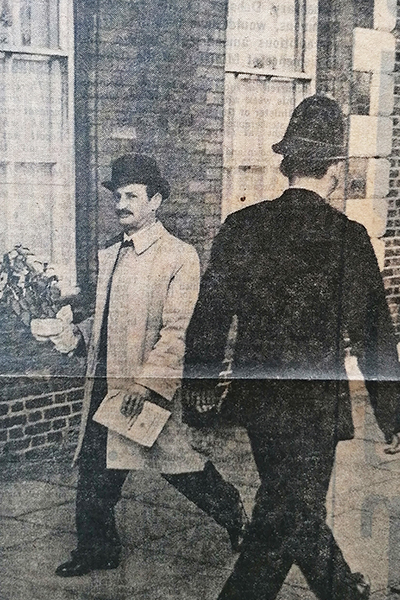
Sam was a committed member of the Grosvenor Light Opera Company (GLOC) and threw himself into every role, ‘His stage manner was of complete commitment and great enthusiasm’. He was so committed that after urgent cardiac surgery he was back on the stage within a few weeks. It was in GLOC that Sam, ‘the shortest tenor’, met Pam, ‘the shortest soprano’, and they would often perform together. In total, Sam appeared in 63 productions.
After retirement Sam and Pam would travel the world visiting family, friends and adventuring together to far away places such as New Zealand, Canada, South Africa, Italy, Switzerland and America. Later in life they enjoyed the local area visiting Epping Forest almost every day. Sam ‘had a wonderful ability to enjoy the very simple things.’
References
T. Bygraves, Sam’s Song: The Story of Sam Eichner and How he Became Sam Everton, London: PJB Publishing, 2014.
Order of Service - Samuel ‘Sam’ Everton, Greenacres, North Weald, 2021.
P. Everton, Interviewee, [Interview]. 10 August 2023.
Researched and written by Thomas Barden

